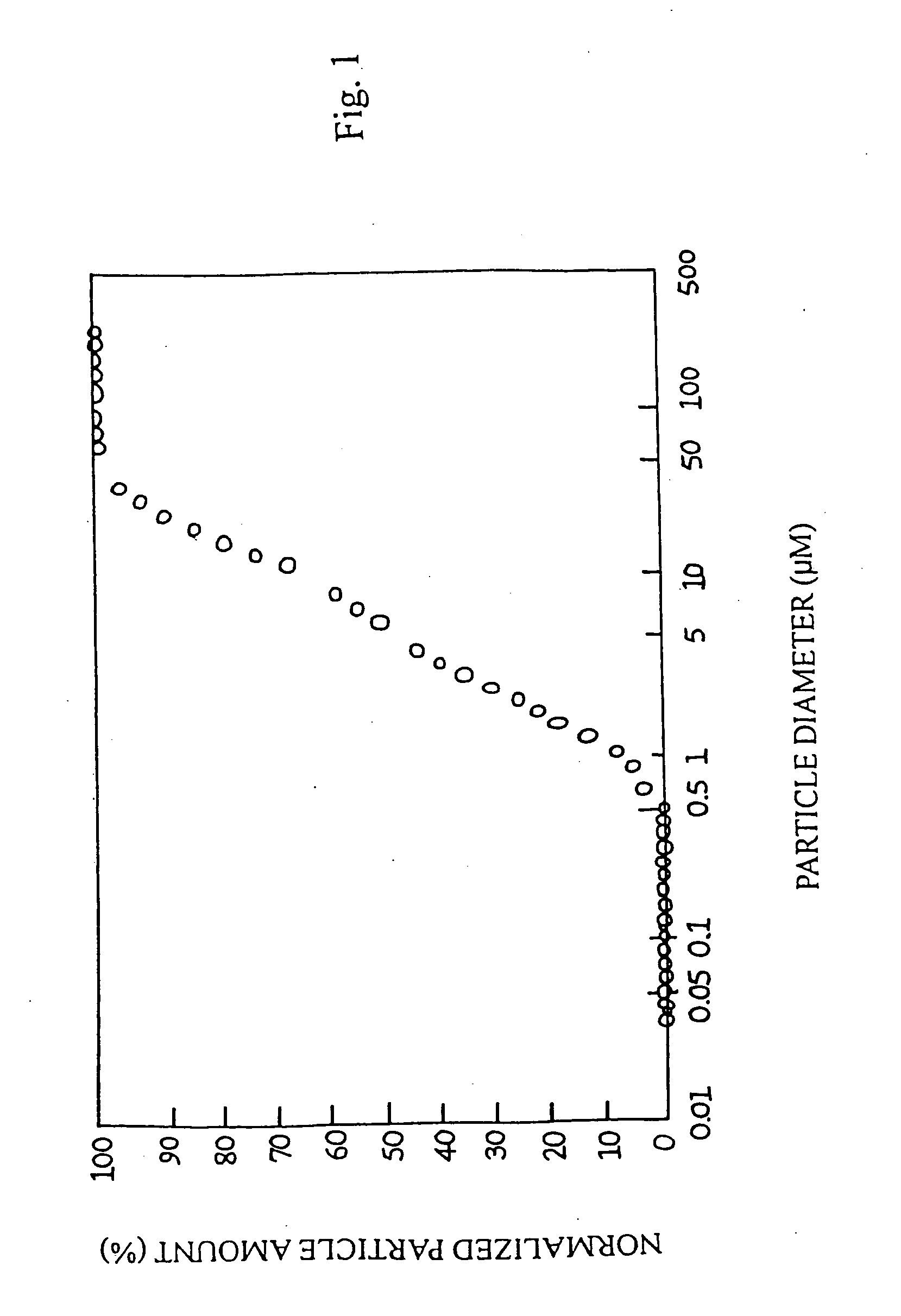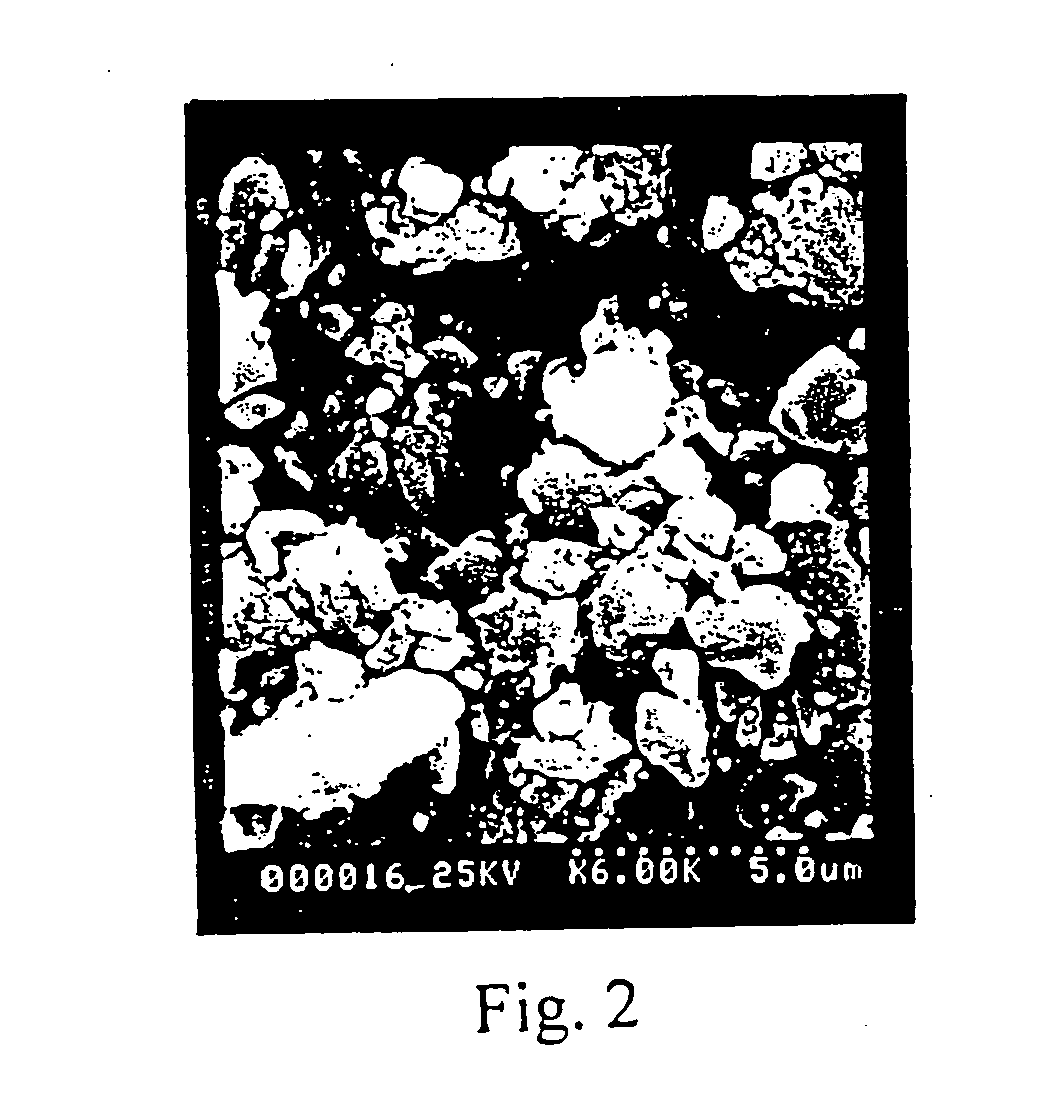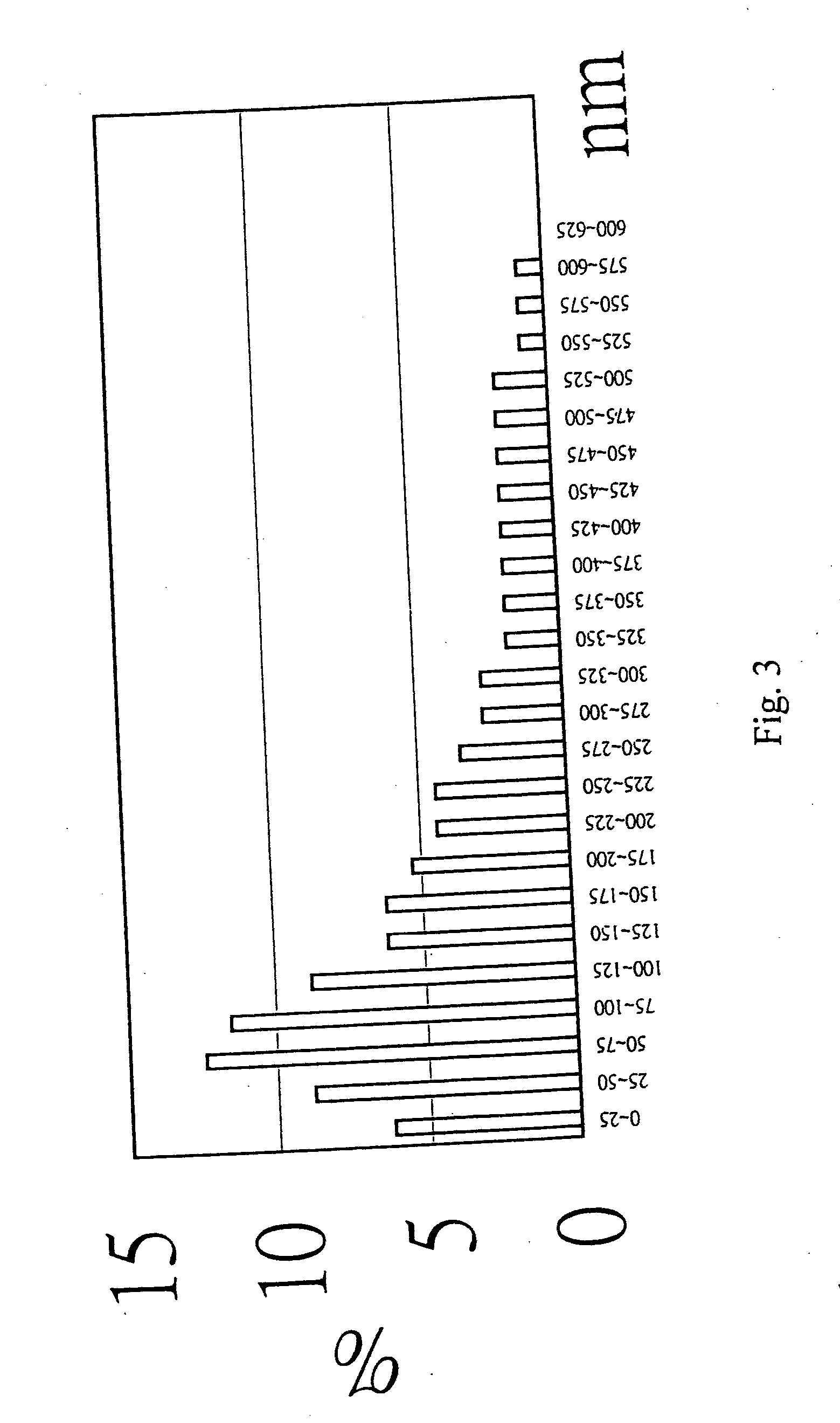Injectable calcium phosphate cements and the preparation and use thereof
a calcium phosphate cement and injection technology, applied in the field of calcium phosphate cement, can solve the problems of inability to achieve the desired effect,
- Summary
- Abstract
- Description
- Claims
- Application Information
AI Technical Summary
Benefits of technology
Problems solved by technology
Method used
Image
Examples
example 1
Heating Treatment
[0036] 5 g of Ca(H2PO4)2.H2O powder and 1.6 ml of 25 mM phosphoric acid aqueous solution were mixed, and stirred for one minute. The resulting mixture was placed into an oven at 50° C. for 15 minutes, and the resulting dried mixture was mechanically ground for 20 minutes to fine particles after being removed from the oven. 1 g of the fine particles and 0.4 ml of phosphate aqueous solution (1.0 M, pH=6.0) were mixed to form a paste, which was tested every 30 seconds to determine the working time and the setting time. The setting time is the time required when a 1 mm diameter pin with a load of ¼ pounds can be inserted only 1 mm deep into the surface of the paste. The working time is the time after which the paste is too viscous to be stirred. The working time of the paste of this example is 30 minutes and the setting time thereof is one hour.
[0037] The paste was placed in a relatively large amount of deionized water immediately following the formation thereof, and ...
example 2
Vacuuming Treatment
[0038] 5 g of CaHPO4 (DCPA) powder and 1.2 ml of 25 mM phosphoric acid aqueous solution were mixed, and stirred for one minute. The resulting mixture was placed in a vacuum environment of −100 Pa for 30 minutes, and the resulting dried mixture was mechanically ground for 20 minutes to fine particles. 1 g of the fine particles and 0.4 ml of phosphate aqueous solution (1.0 M, pH=6.0) were mixed to form a paste, which was tested every 30 seconds to determine the working time and the setting time. The working time of the paste of this example is 20.5 minutes and the setting time thereof is 24 minutes.
[0039] The paste was placed in a relatively large amount of deionized water immediately following the formation thereof, and it was observed that the paste was non-dispersive in deionized water.
example 3
Organic Solvent Treatment
[0040] 5 g of CaHPO4 (DCPA) powder and 1.6 ml of 25 mM phosphoric acid aqueous solution were mixed, and stirred for one minute. To the resulting mixture 1.6 ml of acetone was added while stirring to form a paste followed by placing in a vacuum environment of −100 Pa for one hour, and the resulting dried mixture was mechanically ground for 20 minutes to fine particles. 1 g of the fine particles and 0.4 ml of phosphate aqueous solution (1.0 M, pH=6.0) were mixed to form a paste, which was tested every 30 seconds to determine the working time and the setting time. The working time of the paste of this example is 20.0 minutes and the setting time thereof is 22.0 minutes.
[0041] The paste was placed in a relatively large amount of deionized water immediately following the formation thereof, and it was observed that the paste was non-dispersive in deionized water.
PUM
| Property | Measurement | Unit |
|---|---|---|
| Length | aaaaa | aaaaa |
| Length | aaaaa | aaaaa |
| Length | aaaaa | aaaaa |
Abstract
Description
Claims
Application Information
 Login to View More
Login to View More - R&D
- Intellectual Property
- Life Sciences
- Materials
- Tech Scout
- Unparalleled Data Quality
- Higher Quality Content
- 60% Fewer Hallucinations
Browse by: Latest US Patents, China's latest patents, Technical Efficacy Thesaurus, Application Domain, Technology Topic, Popular Technical Reports.
© 2025 PatSnap. All rights reserved.Legal|Privacy policy|Modern Slavery Act Transparency Statement|Sitemap|About US| Contact US: help@patsnap.com



